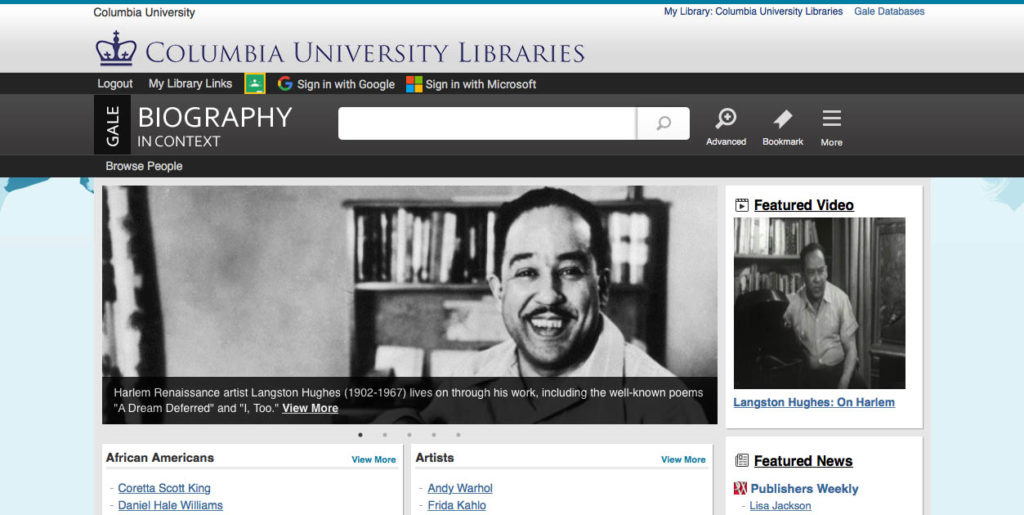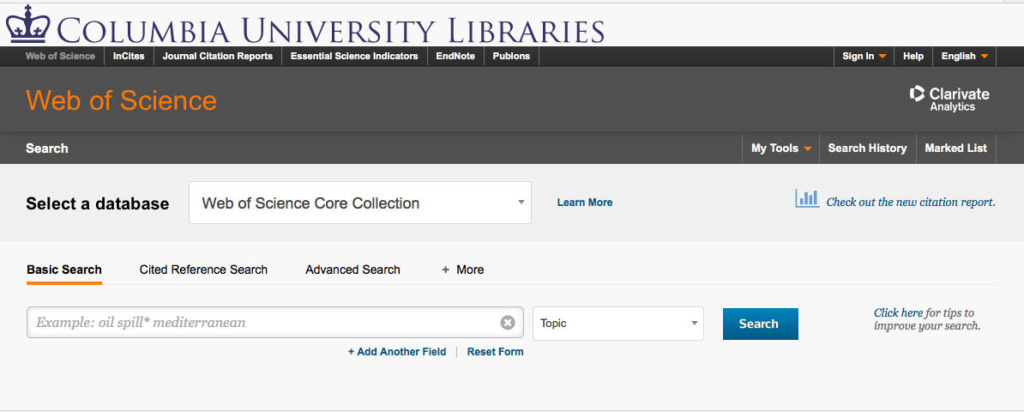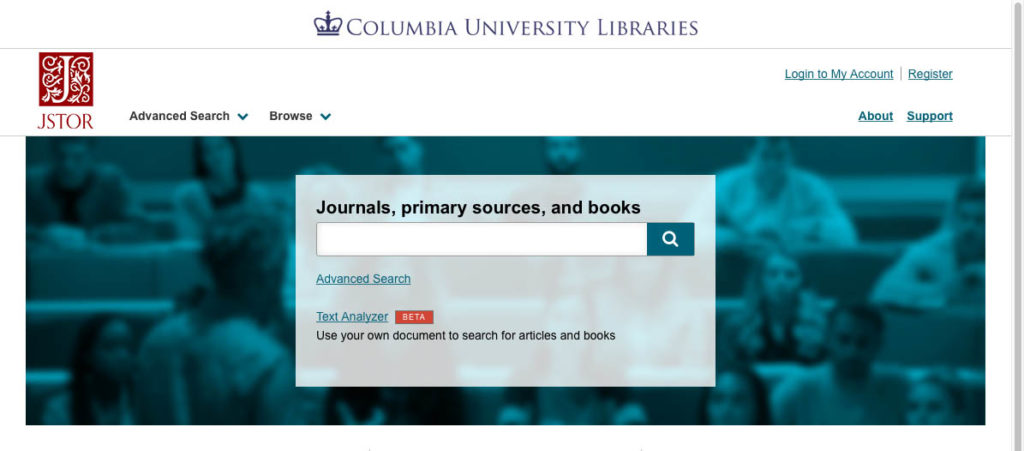Editor’s Note: The Scholarly Kitchen has been exploring issues of publisher brand throughout its history. We have addressed why publisher brand matters, the burden of a prestigious brand, whether megajournals might disrupt the major brands. In recent months, we have been tracking a number of issues around how content distribution and brand are being affected by the potential of syndication, including through the Springer Nature pilot with ResearchGate, to impact publisher platforms. In addition, we have noted that that libraries are taking a much stronger stance against subscription content. All of this is influencing the primacy of publisher brand and is the background against which today’s important post should be understood.
Today’s post is by Robert Cartolano, the Columbia University Libraries Associate Vice President for Technology and Preservation. Rob is a graduate of Columbia University’s Fu Foundation School of Engineering and Applied Science, and has been a member of Columbia’s staff since 1986, where he held the roles of Manager of Academic Technologies and Senior Director of Client Technology Services for Columbia University Information Technology.
Today’s academic library manages a complex set of online information resources, delivered by a combination of locally managed and externally provided services. It is vital to academic libraries that the digital library services we provide — whatever their source — carry clear university brand identity. This strengthens the library’s position in the university and enables it to secure the budget and political capital necessary to do its work. Both libraries and their vendors have much to gain from this approach to brand. Here is how Columbia University developed a more formal approach for Library branding and achieved success with some of our largest vendors.

A University Perspective
In 2017 Columbia Libraries took a closer look at ten of our largest external services, most of them delivered by for-profit vendors, to review the quality of these external web-based services. Web traffic to these services exceeds 7 million page views per year.
I spent the better part of two decades in campus IT, where it was typical to brand services with prominent, top-level University branding, write into contracts that vendor branding was to be removed from top-level pages, and change the design to more closely match Columbia web design guidelines. It was quite a surprise when I discovered that every one of the ten Library services that we reviewed lacked adequate University or Library branding.
When I worked in IT, we used the name “CourseWorks” to brand Columbia’s course management system. We removed the company and product name so that users associated the service as CourseWorks and not the technology or vendor name. While the users are aware of the underlying technology, the CourseWorks service name has endured across three different technology platforms (Prometheus, Sakai, and now Canvas). Similarly, campus email is branded as LionMail, and there is no corporate branding for Google in Gmail.
Several years ago our University administration also began to emphasize consistent use of our campus web design guidelines on all Columbia web sites, including for external services that are made available to students, faculty and the broader community.
And yet, when we looked at vendor web services paid for by Columbia Libraries, our branding was small or non-existent. So we asked the question:
Why did Libraries give away our branding?
Electronic resources have evolved over time from well-known database products with strong brand names, such as Dow Jones & LexisNexis, sometimes on dedicated library terminals and workstations, to include web-based services that provide a wide variety of resources through consolidated vendor platforms. Discovery has transitioned to include unified library discovery and general search engines, enabling users to directly connect to individual articles, ebooks, etc., typically located on web-based vendor platforms. These vendor platforms, unlike other services provided by the University, often include prominent placement of company and service names. Unlike prior database services with easily recognized names, due to mergers and acquisitions some of these company names are less recognizable to our patrons. The net result is that while we pay significant sums of money for these services, we’ve shifted from clearly labelled library services to vendor-branded web-based services with diminished or invisible Library and University branding.
What is the net result of the lack of branding?
Columbia IT maintains an on-campus network with over 100,000 devices. The Libraries have worked with IT to reduce “transactional friction” to connect users to information resources, and provide on-campus users with a direct connection to these resources, thanks to EZProxy and IP-restricted services. While access is convenient and fast, without proper University and Library branding, faculty and students typically have no idea that these services are paid for, at great expense, by the Libraries. We have become “invisible” partly as a result of our own success in providing such convenient access. Both faculty and students have told us again and again that they use the “Internet” to gain access to licensed electronic resources, not realizing that Libraries paid for this access. After hearing a faculty member make such a statement at a Provost-led faculty advisory committee meeting, we decided that we had to take steps to address this issue. Coupled with the University’s direction to deliver a more consistently branded web presence, we also decided that this needed immediate attention by our external service providers.
The Library is the Brand
In an internal meeting, I stated in exasperation, “the Library is the brand” and our staff decided that was to be the name of our initiative to improve library branding. We made the assertion that, like the main entrance and study rooms of the library, our entire web presence, whether provided locally or outsourced to vendors, is a representation of the libraries, an extension of the Libraries’ web presence. All of them, internal or external, represent the library.
A small team of librarians, web design, and electronic resource experts worked methodically with our external vendors to have them place prominent, top-level branding, consistent with University guidelines, on the top of all of our web properties. The banner needs to say “Columbia University Libraries” using the standard University “Trajan” font, alongside the Columbia crown. We also requested that each site include a link to “Ask a Columbia Librarian” to enable users to request assistance from a Columbia library staff member at their point of need using any of our resources.
Vendor Engagement
I would like to tell you that every vendor, upon hearing our request to place a prominent, top-level banner and staff link, immediately responded and did this in a matter of days. After all, in some cases we spend hundreds of thousands of dollars annually, right? Actually, to be fair, some of them did just that, and one did it in 3 days. It’s just a web page, and adding a top banner is relatively simple for most well-constructed web sites. A shout-out to Gale Cengage Learning for making this change in a matter of days.

For many of them, we engaged in a constructive dialogue over a period of weeks and months. The reality is that many publishers and other library vendors needed some time to overcome various challenges. Some vendors were reluctant to give up the “top spot” on the web page; in these cases I reminded senior leadership that we required prominent, top-level branding, and that the Library and University brands were most important. Other vendors required some time to adjust their interfaces and provide configuration controls for library staff to insert a top-level banner. One vendor surveyed other libraries and reported back a strong need for branding by these institutions. The conversation was fruitful, with some vendors customizing their dashboard to make it very easy to add a prominent, top-level banner, and some vendors even taking the extra step to improve their user interface. As of March 2019, Gale Cengage Learning, JSTOR, EBSCO, Proquest, Elsevier, Clarivate Web of Science, and Adam Matthew have all customized their web sites and have placed prominent, top-level branding that meets most or all of our requirements.


We have added branding requirements into our collection development policy, which has been endorsed by our Provost-appointed faculty advisory group. It states that Library branding is more important than the vendor’s or publisher’s corporate brands. It also states that our users’ experiences indicate a lack of awareness that they are using library-supported, library-acquired resources. Finally, it states that continued funding for electronic resources and our ability for continued business with vendors and publishers hinges on meeting our branding characteristics, practices, and principles.
We continue to work with other vendors to effect this change. There have been instances where our electronic resource librarians were not provided with the appropriate level of responsiveness and customer service. On more than a few occasions we needed to reach out to senior leadership at companies to emphasize the importance of Library and University branding, and to ensure the appropriate level of customer service and responsiveness. Our electronic resources librarians direct vendors to our “Library is the Brand” web page.
The Scourge of Advertising
While working with these vendor web sites, we also noticed an alarming issue; vendors have inserted advertising across the top and sides of their services. In some cases, these ads leverage consumer web site advertising networks, placing consumer ads for cars, insurance, and even amusement parks in front of our patrons. Some vendors place ads for other services, “upselling” additional services to our faculty and students without our awareness or permission. One vendor actually placed an advertisement for a competing university in front of our patrons!
I am happy to say that all ten of our vendors agreed to remove the most egregious of these advertisements, including those of competing universities and consumer-based ad networks. We are in continuing discussions with vendors that continue to display vendor-specific ads, as well as ads that are placed to support scholarly journals.
Summary
We believe that vendor-based web services are part of our overall “Libraries web presence” that consists of locally managed and external web platforms, services and applications. We are systematically reviewing and revising all of our patron-facing web presence to include prominent, top-level library branding that meets Library and University requirements. In doing so, we are ensuring that our patrons understand and value the Libraries as the service provider for a vast and ever-expanding set of services delivered to desktops and mobile devices. We will continue to emphasize to vendors that they are providing services to our patrons on our behalf, and work to revise our licensing agreements to include branding requirements and eliminate advertising on our licensed services.
If you are considering a similar effort at your institution, here are some steps you can take to increase the visibility of your library to your patrons through improved library branding:
- Review current institution branding and web design guidelines.
- Develop and/or revise existing library branding to align with institutional branding.
- Document and share your requirements for both internal web sites and external vendors, including links to branding assets as appropriate.
- Contact your vendors and request “prominent, top-level branding” consistent with your library and university web design guidelines.
- Support your electronic resource librarians; schedule high-level meetings with vendors as appropriate to make sure that they understand your documented requirements.
- Add branding requirements into your collections development policy.
- Consider adding branding requirements into your licensing agreements.
To our publishers and platform vendors, I suggest the following:
- Recognize that the Library is the Brand, and that prominent Library and University branding help to provide credibility to your services for our faculty and students. Strengthening the Library brand among faculty and students highlights that the Library is an essential service, and that it requires appropriate levels of funding and campus support in order to continue subscribing to your services.
- Work with your library customers to modify your configuration options to include prominent, top-level branding along with top-level links to obtain librarian assistance. Library branding should be consistently placed on all pages, including item level pages.
- Eliminate the use of all consumer-based ad networks along the top and sides of licensed library services. Consumer-based ads give end users the appearance that these sites are “free off the Internet” as opposed to licensed Library services.
- Relocate or eliminate redundant or unnecessary corporate branding from the top of services.
- Provide excellent customer service for electronic resource librarians, who work very hard to integrate your services into our institutions.
Discussion
14 Thoughts on "Guest Post — The Library is the Brand"
This is great. While we do have our library branding on many of our 3rd party sites, I can imagine some will just outright say no – if faced with an inflexible vendor, would you cancel the resource in response? (This has been our response to those specialized databases unable/unwilling to provide IP/EZproxy authentication )
Hi Nicole,
I think you need to balance the need for strong library branding with the need for the service, and it probably needs to be decided on a case-by-case basis. I would start the conversation with the more specialized databases, and let us know how it goes.
Best,
Rob
One question we should consider is what happens to library branding as more and more material becomes OA. Surely no one is suggesting that libraries, all 7,000 of them, will each be the window through which users will access this material. The library branding strategy is a commendable activity for a publishing paradigm that is falling away.
Hi Joseph,
We currently provide discovery to 2 billion items via a web-scale discovery service, in our case we use Summon, including licensed and open access items. That service is available via http://clio.columbia.edu, and it is branded as a library service. It certainly possible that users can find those items via consumer-based discovery, and we think there is also a place for aggregated collections of materials that serve our scholarly communities, such as web-scale discovery tools for the academic library market.
Best,
Rob
This is pretty simple isn’t it? Just license the data and/or use apis and then create you own interfaces! Since you would then be in control, you can put your brand anywhere you like and heaven forbid, even build services on top of the data.
While libraries have used “library systems” for over 50 years the truth is libraries (and universities) have invested little in creating capacity to manage and create digital content. Most libraries have chosen to outsource technology, even simple things like libguides. Outsourcing means that technology isn’t considered a
core of our work and is really not part of our jobs. Let someone else do technology. In this article you are simply arguing for a “white labeled” service, one that you did not create, but want to to put your brand on. I don’t think that really changes much.
For things to really change leaders have to accept the need for “digital transformation” realizing that managing digital is indeed a “core” part of our organizations. We have to take responsibility, create capacity, and share as much as we can among ourselves.
Hi Brian,
We have already done this with discovery services, check out http://clio.columbia.edu ; it provides a front-end for products like Voyager and Summon. I agree that this an incremental effort, and there could more transformational efforts. For example, there are areas where it may be appropriate to leverage back-end resources with a library-managed front-end; in fact, our related effort to Imagine a Better Academic Ebook Experience may require more front-end ownership on the part of libraries in order to deliver a better ebook for users.
Best,
Rob
Rob,
I did look at search interface and it looks good! (I’m assuming Blacklight but I didn’t look closely). Ten years ago Lorcan Dempsey had the thing about the “inside out” library. The idea is that discovery happens at the network level so don’t worry about it. Our job is not to bring resources from the outside to our community but rather to bring our community to the network. Every information resource (of any kind) that is produced in your community needs to made available to the network (using standards). We have the web but I bet not every information resource on you campus is on the web (especially in a standard format). We also have the semantic web and linked data. RDF is the first step toward inference and better search and possibly AI. These standards can be used in every form of scholarly publishing, data management, online course creation, etc. So the thing is look inward and bring you capacity and expertise to help bring your community to the network.
I agree with the author’s point that libraries have paid for these resources and made them easily available and accessible, and clients/users need to know that it is their library that has facilitated this, whether through technology management/services of the library or that of others.
The advertising part struck me. I’d like to understand the objections more. Advertising revenue may offset expenses keeping the service at a lower cost for the institution. Objections to advertising also begs the question on whether a tiered pricing model should be considered like almost all other subscriptions these days– that is, if you want an “ad free” experience, it will cost more. Likewise for branding of the product. I agree that end users should know why they have access to the content, but they should also know/care about who is providing the service.
Hi Angela,
Thanks for your note. Advertising could be a useful mechanism to offset expenses; the challenge is that some vendors have introduced advertising into our existing licensed services, with little or no notification to the libraries. It could be a reasonable conversation to engage e-resource vendors, societies and libraries about the potential role of advertising, but unfortunately libraries have mostly been left out of this conversation. I’d be happy to discuss this more with you.
Best,
Rob
I will consider embracing ads on vendor platforms if vendors consider adjusting their subscription pricing to account for the ad-based revenue. As Rob points out, vendors are simply silently adding ads to platforms to generate new revenue, not as an effort to make pricing sustainable for subscribers.
I would add, too, that many libraries do not take advantage of current vendor branding offerings. For example, EBSCOhost makes it easy to rebrand its platform totally, but surprisingly few libraries take advantage of this customization services. As branding or lack thereof does not affect content delivery or platform functionality, it is easy to deprioritize when eresources management units are shortstaffed or, even more significantly, when the vendor has onerous branding restrictions such as very specific permissible file formats, sizes, or dimensions. Which again points to the need for libraries to make branding a strategic priority and ensure not only that vendors provide the service but that libraries themselves consistently take advantage of it.
Best SK article in a long time!
I thought so too



